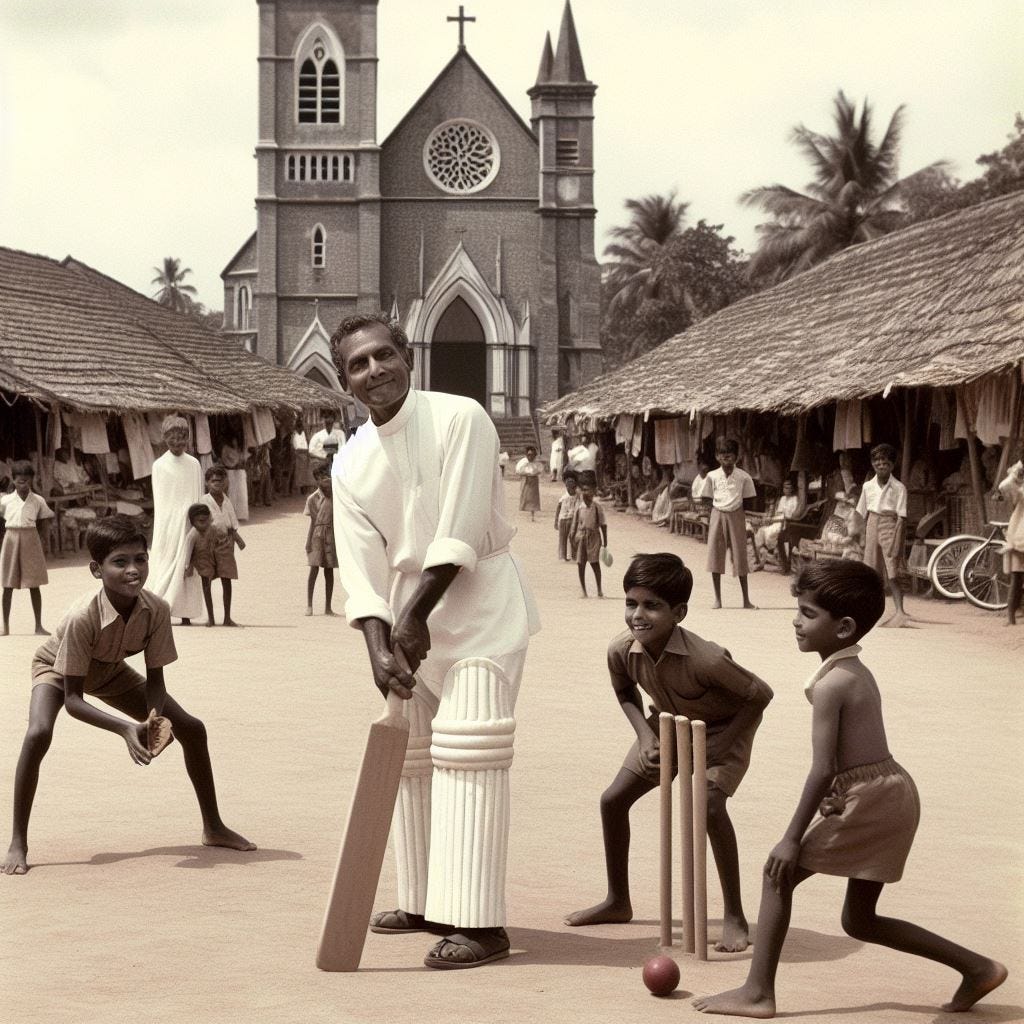The Cricket Priest and Other Tales of Dalugama
The Cricket Priest and Other Tales of Dalugama
Dalugama, a village nestled in the heart of Ceylon, pulsated in a rhythm all its own. However, the heart of this rhythm wasn’t the bustling market or the local politician but the parish priest — Father Charles.
Father Charles, a man of the old, had little patience for the winds of change sweeping the world in the sixties. Miniskirts, a symbol of liberation in the West, were met with his disapproval as “immodesties” from the pulpit. Yet, beneath his stern exterior, a playful spirit resided. He’d often be seen in the dusty afternoons, cassock rolled up to his knees, captaining the village boys in a game of cricket. His booming voice, directing plays from behind the wicket, was a familiar sound in Dalugama.

Father Charles held a place in the villagers’ hearts that even the local MP couldn’t rival. He was more than a religious leader; he was a friend, a confidante, and a source of amusement for the mischievous youngsters. His unorthodox methods, like using the raw word “Paratti” (Devil woman) to describe immodest attire, turned him into a legend among the youth, a welcome contrast to the usual sermonising.
His popularity, however, was only sometimes praised. His outspoken nature ruffled feathers in his next parish, leading to an audacious act. A wealthy parishioner, threatened by Father Charles’ progressive ideas, abducted him and held him captive. News of this outrage reached Dalugama, and the village boys, fuelled by loyalty and a dash of youthful adventure, embarked on a rescue mission. They descended on the offender’s property, freed their beloved priest, and left a trail of “repairs” on the man’s assets. This defiance became folklore, a testament to the enduring bond between the village and its unconventional priest.
Religion was the lifeblood of Dalugama, especially during Lent. The church transformed into a sombre stage, adorned with a towering cross and statues depicting Jesus’ suffering. Clothed in black and white, families embarked on the Way of the Cross, a poignant walk through fourteen stations of repentance. Even young children were not spared the sombreness, fasting and attending lengthy Good Friday prayers.
My mother was particularly devout. Apart from adhering to traditional rituals, she held a special reverence for St. Anthony. Her home held a “pedestal of faith,” adorned with various saints, where she’d make vows and leave offerings — tiny coins wrapped in white cloth — in exchange for divine favours.
These experiences painted a vibrant picture of my childhood in Ceylon. These memories, woven with faith, mischief, and the unwavering love of a village, remain forever etched in my heart, a testament to the unique tapestry of life that unfolded in Dalugama.
Subscribe to my stories https://djayasi.medium.com/subscribe
Comments
Post a Comment